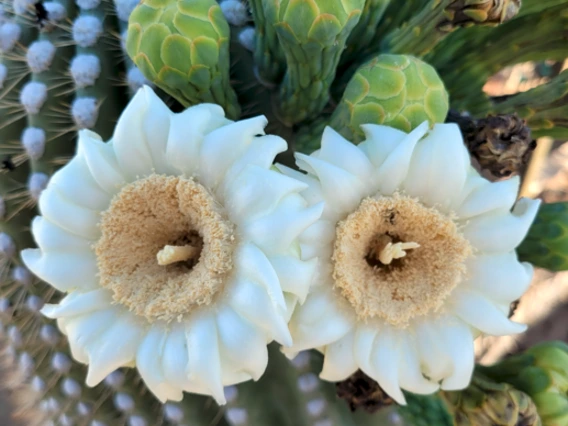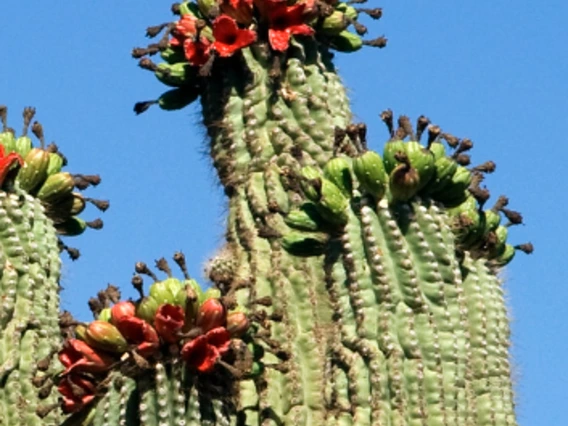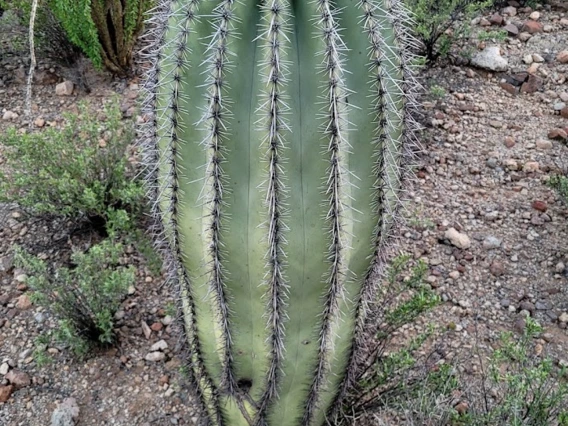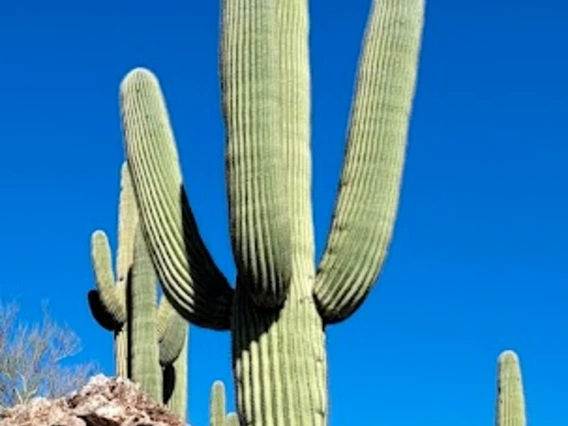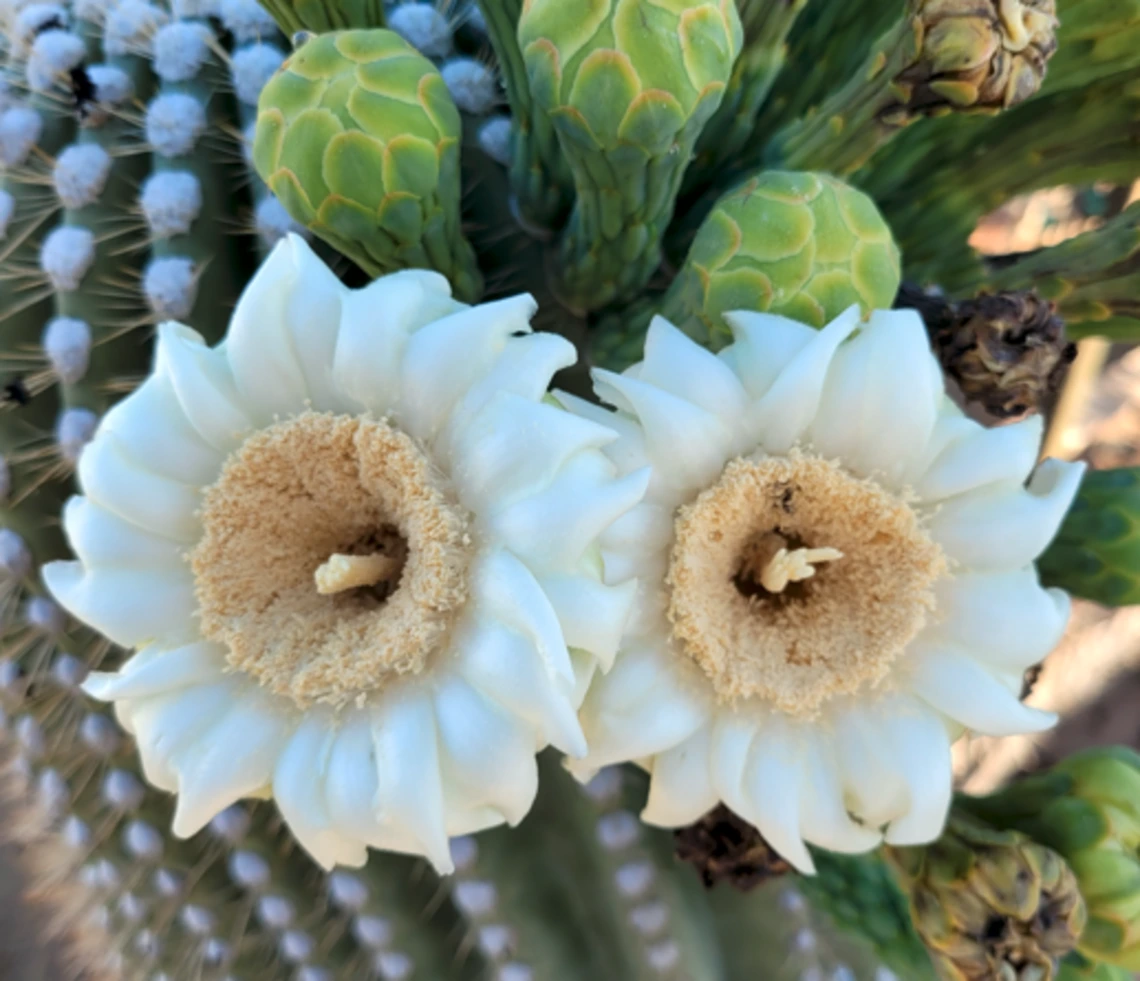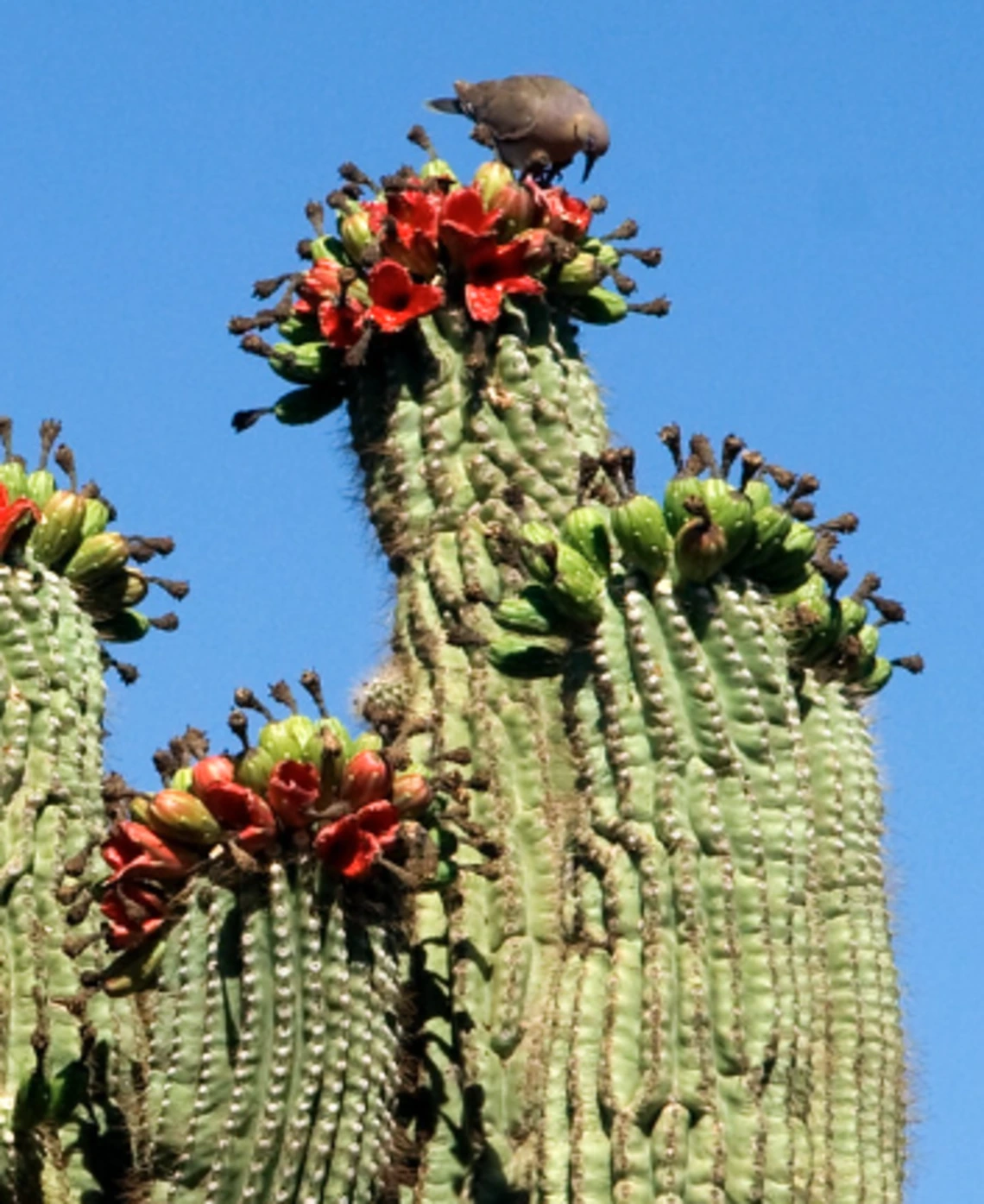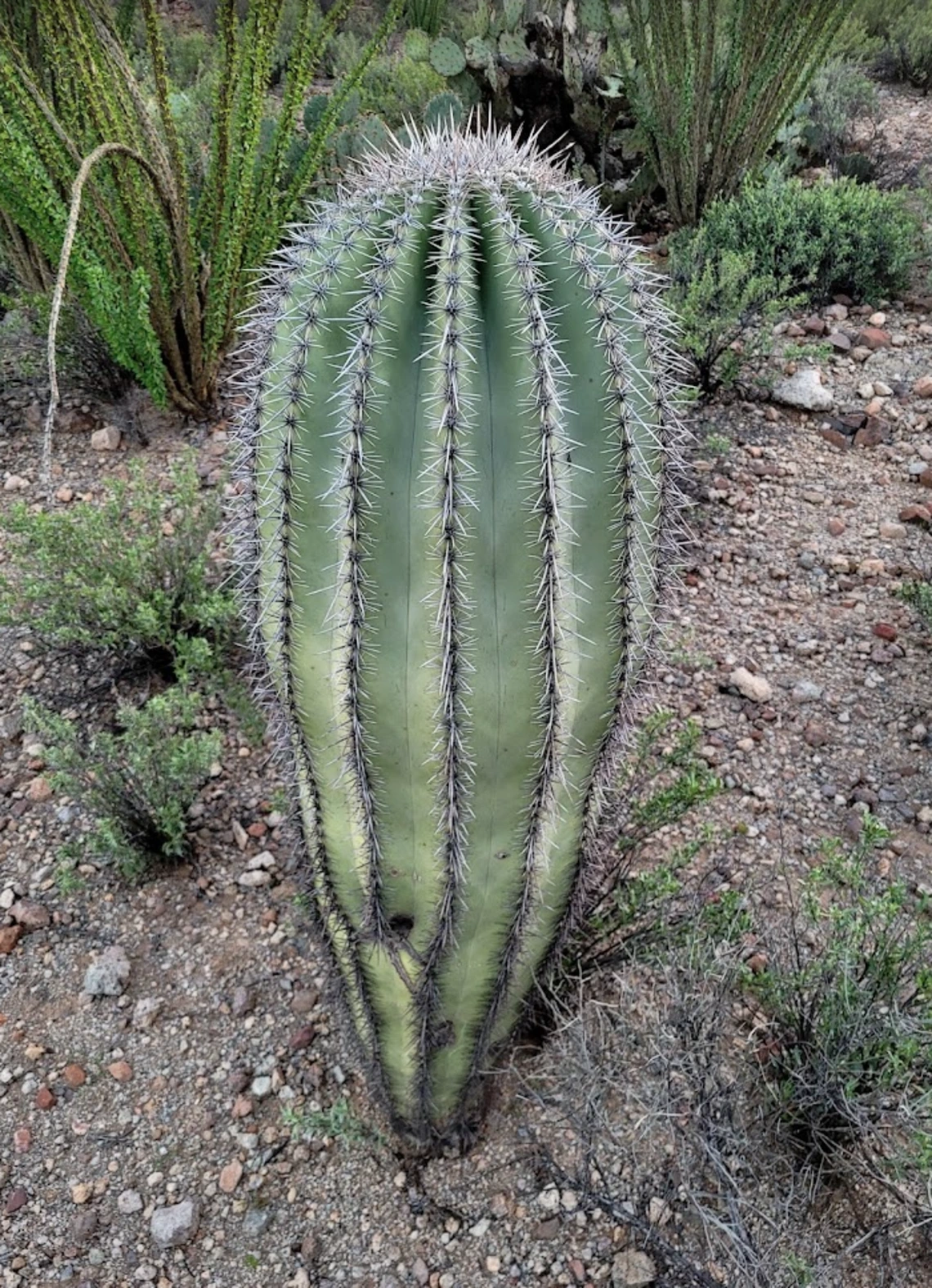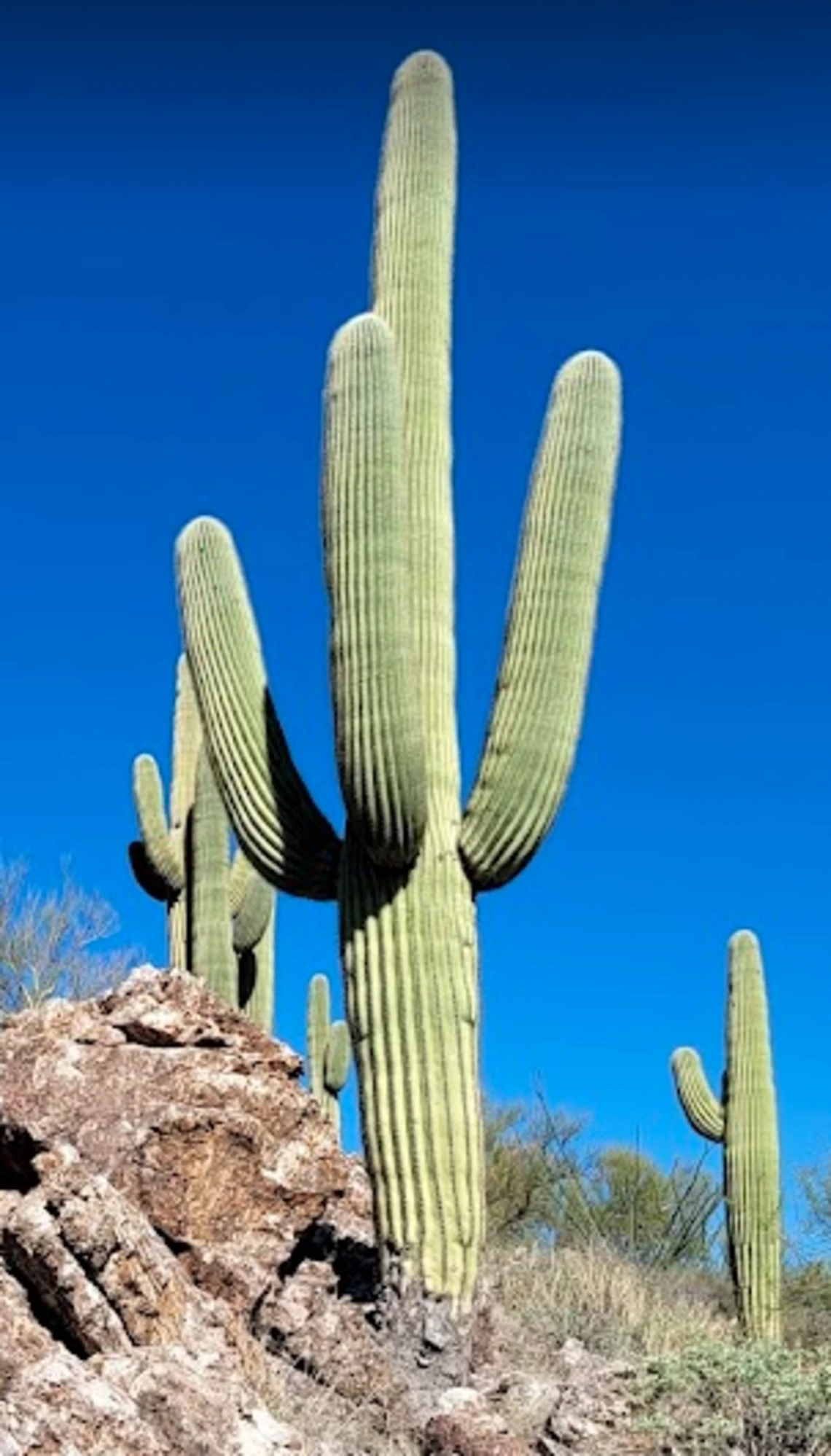Family: Cactaceae
Compound: Car gig
Synonyms: Cereus giganteus
Geographic Origin: extreme southwestern US, northwestern MX
Characteristics: A large, columnar cactus with a thick green stem from which 1 to 5 arms may grow, though some plants have been recorded with up to 50. Arms usually grow from a point over 1.8m (6ft) above the ground distinguishing them from the similar looking Pachycereus pringlei which can be sympatric in some areas. Areoles line the trunk and arms along ribs which usually number between 12-25. From each areole, dense bundles of straight stiff spines protrude. This species grows slowly and can reach heights of 15.2m (50ft). The trunk is typically between 30-60cm (1-2ft) in diameter and develops a brown to gray woody bark with age. White flowers about 7.6 (3in) in diameter open at night in the early summer. After pollination, the base of the flower swells into a fruit which then splits exposing a red, seed filled flesh when ripe.
Natural History: Endemic to the mainland portion of the Sonoran Desert, these cacti are a keystone species of the region. Found in sandy flats and bajadas to rocky slopes in a range of plant communities between 152-1066m (500-3,500ft) above sea level. These plants are capable of living between 150-200 years and provide a huge amount of food for wildlife. During fruiting season, the desert is flooded with saguaro fruit and countless animals can be observed visiting the plants. Many species of birds use cavities excavated in the sides of saguaros for nesting and shelter. Even after the plant dies, it still provides shelter and food for wildlife. Wild plants germinate during monsoon under a nurse plant which provides shade and buffers temperatures; eventually the nurse plant will die, and the adult cactus will remain. Plants begin to flower between 40 and 75 years of age and grow arms between 50 and 100 years.
Cultivation Notes: Young saguaros will usually require shade to ensure they do not burn in the heat of the sun. Otherwise, the Saguaro is perfectly fine to live in full sunlight and dry conditions due to its ability to store water in its fleshy stems. This plant is easily propagated by seed which should be treated like other cacti seeds. It prefers partial to full sun but needs to be acclimated if being transplanted into full sun. Care should be taken to keep the south side of the plant facing south when moved to a new location. The saguaro requires very little water once established, which, in combination with its striking appearance, make it a great plant for arid landscapes.
For general cactus and succulent care information, click here
Ethnobotany: The saguaro is extremely important to the people of the Sonoran desert. Fruits, which ripen in summer during period of food scarcity preceding monsoons, were used as a food source by many indigenous peoples. The seeds are made into a butter like substance, or used in cakes. The Saguaro has special Tohono O’odham significance as their calendar begins and ends based on fruiting time (“Saguaro Harvest Moon”, right after the “Painful Moon”), and Saguaro wine was served ceremonially to celebrate the upcoming monsoons. Others ritually discard the outer fruit wall onto the ground facing upward, to encourage rain. Ribs were not only used for harvesting fruit but also as a building material, shelter framework, roofing and firewood.
Citations:
Warren, Jones and Sacamano, Charles. Landscape Plants for Dry Regions. Cambridge, MA. Fisher Books, 2000. Print.
Nabhan, Gary Paul. Coming Home to Eat. New York: W. W. Norton and Company, Inc., 2002. Print.
Phillips, Steven J. and Comus, Patricia Wentworth. A Natural History of the Sonoran Desert.Tucson: Arizona-Sonora Desert Museum Press, 2000. Print.
Hodgson, Wendy C. Food Plants of the Sonoran Desert. Tucson: University of Arizona Press, 2001. Print
Desert Botanical Garden. Retrieved June 22, 2024.
Arizona Sonora Desert Museum. Retrieved June 22, 2024.
Southwest Desert Flora. Retrieved June 22, 2024.
SEINet Arizona – New Mexico Chapter. Retrieved June 22, 2024.


